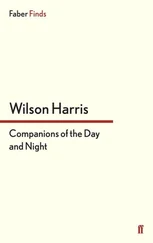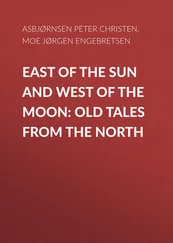The Syriac coinage by Wael includes an issue representing the bust of King Wael, on the reverse, and the head of the Parthian king, Vologases IV, on the obverse, arguably celebrating Parthian friendship before the end of the Roman–Parthian war (161–166), as a result of which Osrhoene became a satellite kingdom of Rome (see Chapter 27); the only Syriac inscription on these coins indicates the identity of the sovereign with the label “King Wael” (Co1). Another issue by Wael presents his bust similarly identified in Syriac as “King Wael,” and, on the reverse, a temple accompanied by the inscription “the God Nah∙ay” (this god is also mentioned in Bs 2, a funerary monument for a religious functionary, a budar , of Nah∙ay; Healey 2019: 53–54). In the best-preserved examples of this issue, the temple is seen in three-quarters perspective, with a star depicted on the pediment, and with a cube-shaped betyl lying on a pedestal beneath the doorway (Co 2). The only other known coins with Syriac inscriptions, by the kings Ma‘nu VIII and Abgar VIII, have a simpler iconography; they all represent the bearded bust of the king on the obverse, wearing a tall tiara, and, on the reverse, the Syriac legend “King Ma‘nu,” or “King Abgar,” encircled by a wreath (Co 3 and Co 4). The representations in coins of Edessene kings shows a clear debt to Parthian royal iconography (Winkelmann 2007).
Among the Syriac sources for the study of the Roman Near East, parchments and papyri occupy a prominent position. While only few instances survive from the period covered by the present volume, it should be emphasized that these documents are only a small remnant of the lively scribal and legal traditions of Edessa and Osrhoene ( Chapters 11and 35). In addition to these documents, a glimpse of the administrative and scribal activities in the kingdom of Edessa during the third century derives from a historiographical source, the Chronicle of Edessa , a composite annalistic compilation that took its current form during the sixth century but that includes earlier material (more on this below). The text makes reference to the official “scribes,” or perhaps “clerks of Edessa” (3.12: sōprē d-ʼūrhōy ), and to “prefects (or commissioners) of the city” ( šarrıĪrē da-mdıĪtō ), who were in charge of the official archive of Edessa ( ʼarkeyōn d-ʼūrhōy from the Greek archeion ; 3.13–16); the recent discovery of the tomb of a scribe, Gadya, demonstrates the wealth that qualified administrative personnel could own (Önal 2017: 132–134). The royal archive of Edessa was still functioning in 243 CE (as attested by P. Dura 28) and was also known to Eusebius of Caesarea ( Hist. eccl . 1.13.5 and 10; Segal 1970: 20–21); it contained not only private documents such as the copy of a Syriac deed of sale found in Dura-Europos ( P. Dura 28), but, arguably, also annalistic records of the Abgarid dynasty, later used in the compilation of the Chronicle of Edessa . The surviving documents, all of which postdate Caracalla’s Constitutio Antoniniana of 212 CE, attest to the intersections of Roman law and local legal traditions; but they also offer evidence of the use of Syriac and Roman proper names within legal documents in relation to each individual’s social status: perhaps unexpectedly, high-ranking individuals and public officials chose to bear Semitic names in the documents, while low-ranking officials, scribes, and private individuals from local contexts and without office opted for Roman names, ultimately revealing the complexities of cultural divisions running through Edessene society (Sommer 2018: 259–271).
P. Dura 28 is a complete Syriac document written on parchment and found in Dura-Europos, recording the sale of a female slave; it was redacted in Edessa in 243 CE (the date is given according to the Seleucid era), and it provides us with rich chronological information that has added to our knowledge of the status of Edessa under Rome in the third century (Millar 1993: 478–479). The long preamble in the text also demonstrates that Edessene civic authorities asserted peer status with Greek metropoleis and Roman coloniae ; the Edessenes were organized into a citizen community that was consistent with other Greek cities and Roman colonies in Syria. The document therefore demonstrates that the use of the Syriac language cannot be merely understood as antagonistic to mainstream Roman imperial culture, but, rather, Syriac enabled the Osrhoenians to shift their allegiances within the context of a broader and complex dialogue on how Romanness was understood in a Roman provincial setting (Drijvers and Healey 1999; Andrade 2015: P1; see also Chapters 11and 35).
Two additional Syriac documents on parchment emerged more recently from the antiquities market; they originate from Batnae in Osrhoene and date back to 240 and 242 CE respectively ( P. Euphr . 19 and 20; ed. Drijvers and Healey 1999: P2 and P3). They record a transfer of debt and a lease of repossessed property respectively, and they have been used in the study of how Osrhoenians represented their sociopolitical context and interacted with it (Millar 1993: 478–479; Andrade 2015). Traces of the complexity of this relationship come from similar documents that use both Greek and Syriac languages: P. Euphr . 6 (with its duplicate P. Euphr . 7, dated to 249 CE) contains a Greek bill of sale of a slave, which, however, is accompanied by a Syriac summary and a Syriac list of witnesses and guarantors (Feissel et al. 1997). Syriac subscriptions are also found on the Greek P. Euphr . 3 (together with its duplicate P. Euphr . 4; Feissel and Gascou 1995), which also qualifies as the earliest known instance of Syriac on papyrus, written before 256 CE (see Chapter 11; Feissel and Gascou 1989; Butts 2011b).
Additional Syriac materials come rather from a village in upper Egypt, Kellis, and circulated among the Manichaean community there. Two documents, written on wooden tablets, contain Syriac–Coptic glossaries of religious and liturgical terms ( T. Kell. Syr./Copt . 1) and of terms and phrases from Manichaean cosmological and eschatological texts ( T. Kell. Syr./Copt . 2); they stand as evidence for the effort that went into the translation of Manichaean scriptures from Syriac into Coptic. There survive also Manichaean religious texts in Syriac on fragments of papyrus ( P. Kell. Syr . 1, and possibly also P. Kell. Syr . 2), and in both Syriac and Greek on a fragment from a parchment codex ( P. Kell. Syr./Gr . 1; Gardner 1996–2007). In addition, we have a mid-fourth-century Greek private letter from Kellis about a member of the Manichaean community who “has become a user of Greek and a Syriac reader”; the author of the letter, although writing in Greek, signs his name in Syriac ( P. Kell. Gr . 67; Gardner 1996–2007). Other fragments of Manichaean Syriac survive on parchment (Cambridge University Library, Or. 2552–2553; British Library, Or. 6201 C (1); Berlin Papyrus Collection, P. 22364; P. Heid. Syr . 1) and on papyrus (Bodleian Library, Mss. Syr. D.13 (P) and D.14 (P)); they are all edited and translated in Pedersen and Larsen 2013. One of the most striking instances of Manichaean Syriac, however, comes from a rock-crystal stamp seal, now at the Bibliothèque Nationale de France, with the inscription “Mani, the Apostle of Jesus Christ” and perhaps made for the use of Mani himself (216–276 CE) (Gulácsi 2013).
Unlike in the cases of Palmyrene or Hatrene Aramaic, there survives in Syriac an extremely rich historiographical tradition. One of the oldest and most important texts is the already mentioned Chronicle of Edessa , a sixth-century historiographical compilation covering the period from 133 BCE to 540 CE, which is made up of more than a hundred annalistic entries, some of which are likely based on the archival records of the kingdom of Edessa (ed. and Latin translation in Guidi 1903; English translation in Cowper 1864). One of the most elaborate of these entries is a vivid narrative of a destructive flood that hit Edessa in 201 CE; the text reports the reactions and the response of the king, Abgar VIII (176–211), the noblemen associated with him, the administrative personnel of Edessa, and its surveyors and architects on the occasion of this tragic event. Among the buildings destroyed by the flood, the Chronicle mentions a “church of the Christians”: the text therefore implies the existence of a Christian church, presumably a house church of the sort known from Dura-Europos, and of a Christian community at Edessa at this time.
Читать дальше












